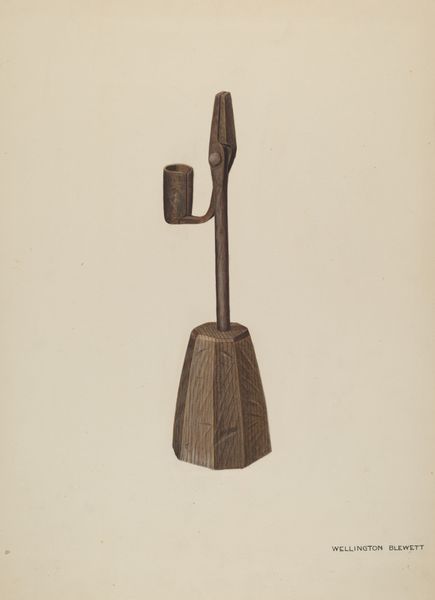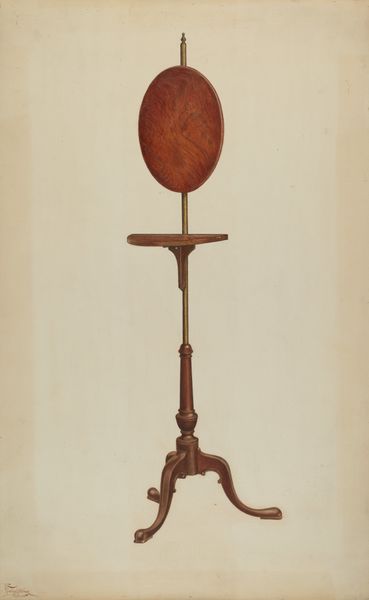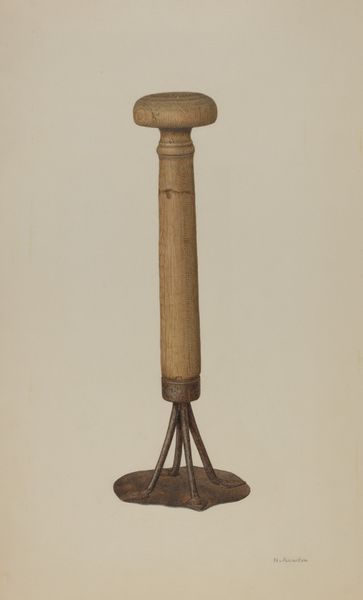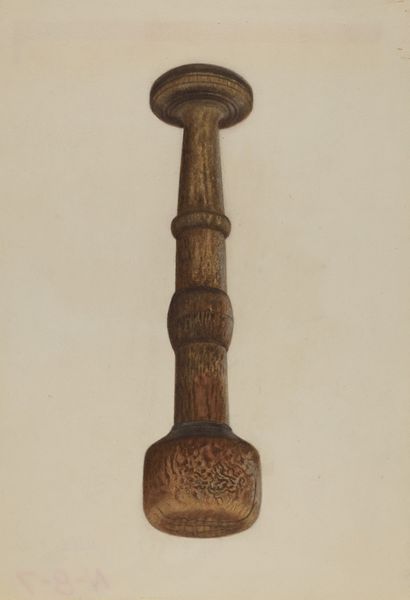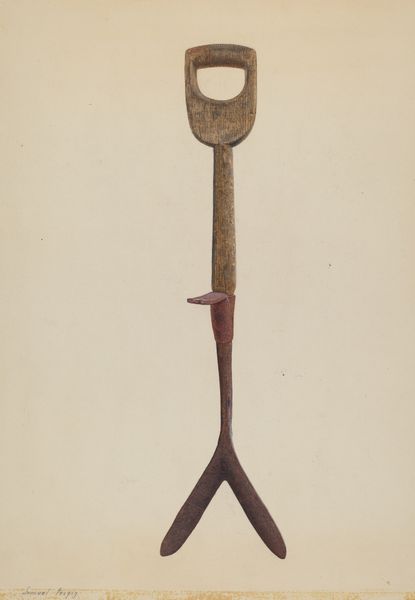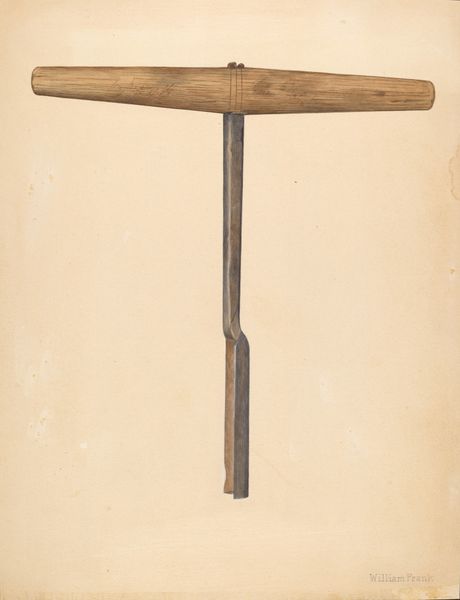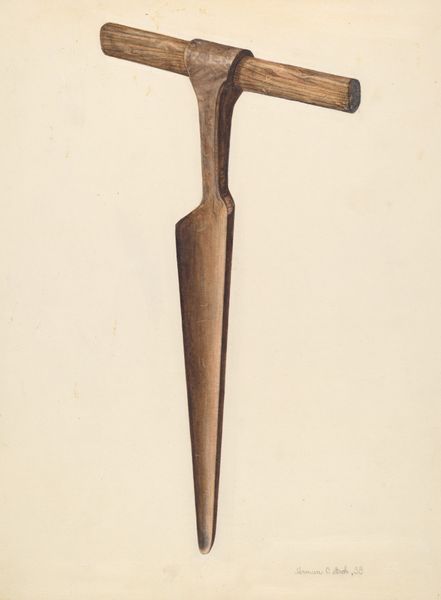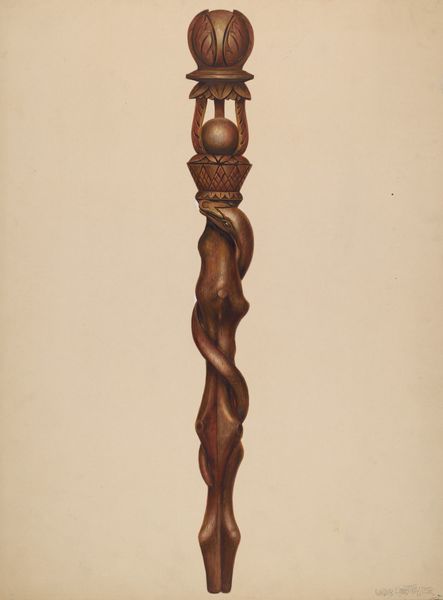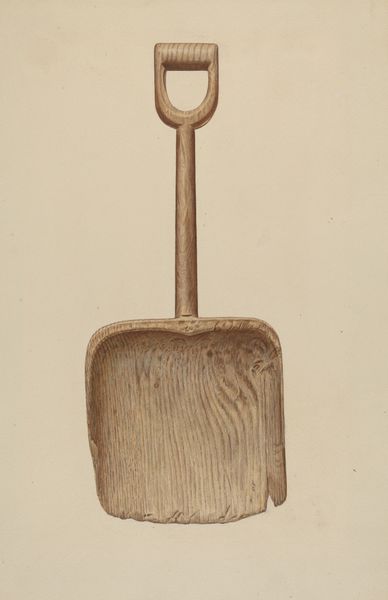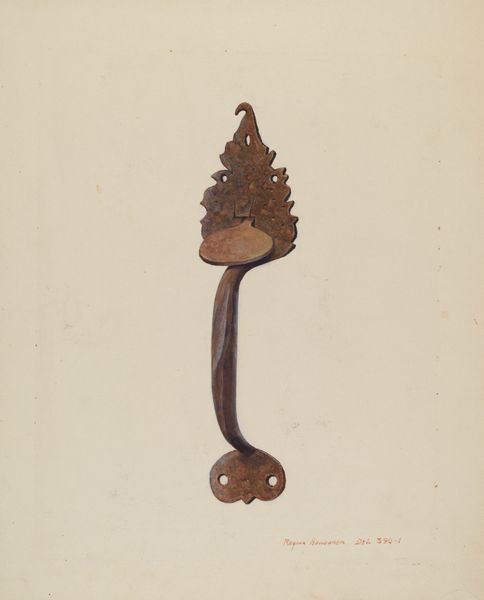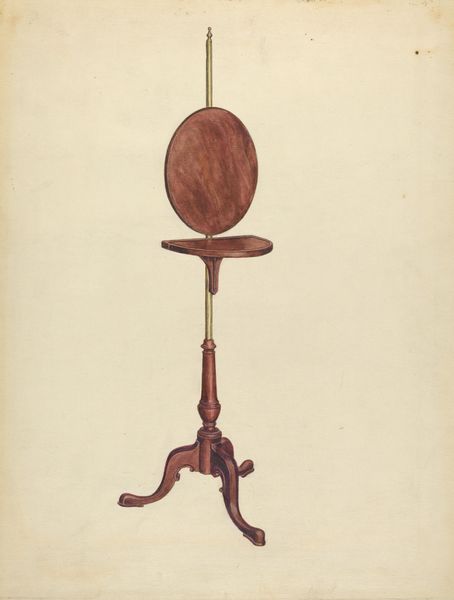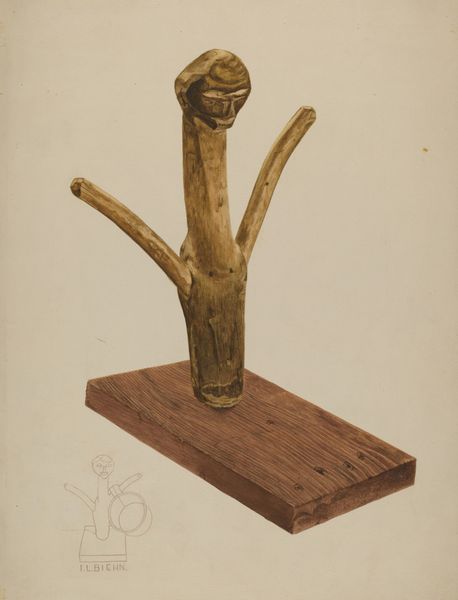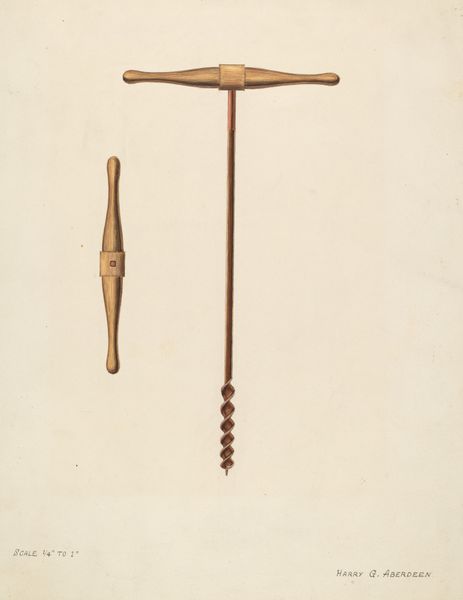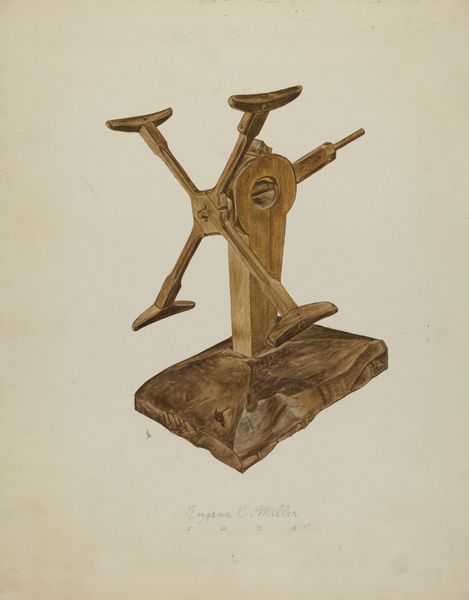
drawing, wood
#
drawing
#
caricature
#
geometric
#
wood
Dimensions: overall: 35.7 x 24.5 cm (14 1/16 x 9 5/8 in.) Original IAD Object: 6 1/4" long
Copyright: National Gallery of Art: CC0 1.0
Curator: What a fascinating piece. I'm immediately struck by the drawing of a Rattle. It's from between 1935 and 1942 and attributed to Rex F. Bush. Its medium includes both wood and drawing on what looks like paper. Editor: Well, hello there, quiet giant! My first impression is... peaceful. Maybe because of the neutral background, the woody tones, and that almost classical-urn shape in the handle. What’s it like being shrunk down and put on display, I wonder? Does it miss its sound? Curator: I think examining it through the lens of material culture theory, we can consider the rattle not just as an object, but as a signifier of childhood and perhaps even power dynamics. After all, sound creates presence. Who is allowed to make noise, and who is silenced? What message did Bush hope to convey? Editor: Right! Silence IS pretty loaded, especially coming out of the 30s, 40s. The drawing is also such an exercise in smooth shapes and warm color. Is it meant to be seen or held, or to stand silent for display in a hall somewhere? The grain in the wood almost glows—a patient artist bringing it out! It feels incredibly… tactile. Almost erotic with its curves. Curator: Yes, the sensual quality of the wood and the rounded forms invites a reading through a gendered lens. One wonders, were there anxieties related to constructions of masculinity and objectification, or a nostalgic return to more primitive and traditional ways of living during an era marked by great transformation? Editor: Hmm, primitive nostalgia. I hear that! Now that I am considering your argument. Those rectangles forming the top almost have the form of piano keys! Maybe it’s not supposed to rattle in the way that a child’s toy would. But provide percussion, rhythmic counterpoints that we create, always hoping to control? Curator: The artist may have sought to freeze something ephemeral, childhood itself. As for your reference to keyboard, it is an interesting parallel! As something often connected to learning, that connection has potential, however more research would need to be completed before reaching that conclusion. Editor: The artist could just have really admired wood grain. In any case, a fascinating window into simpler shapes but richer interior layers. Curator: Absolutely, a piece that definitely leaves room for further interdisciplinary investigations.
Comments
No comments
Be the first to comment and join the conversation on the ultimate creative platform.
